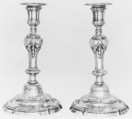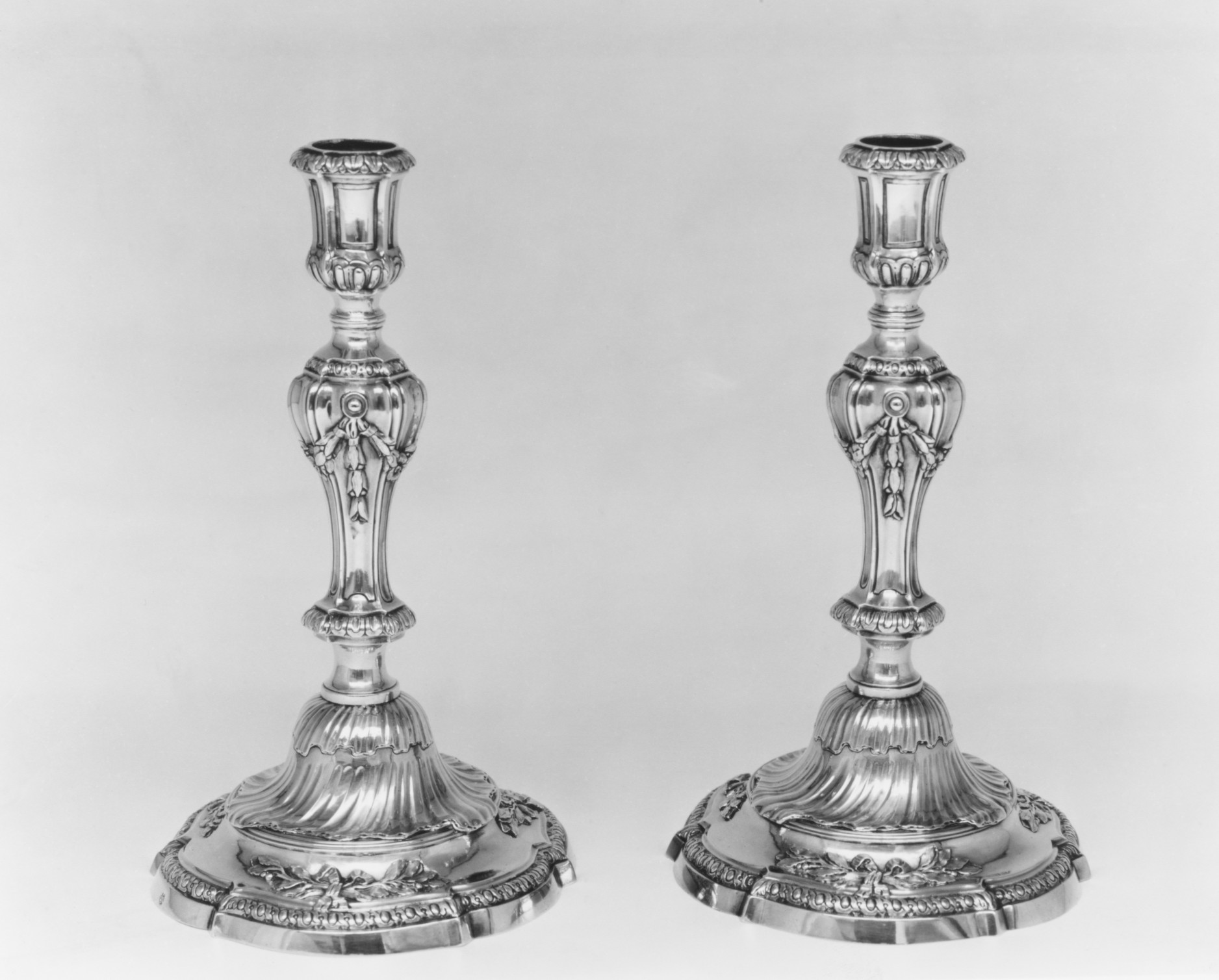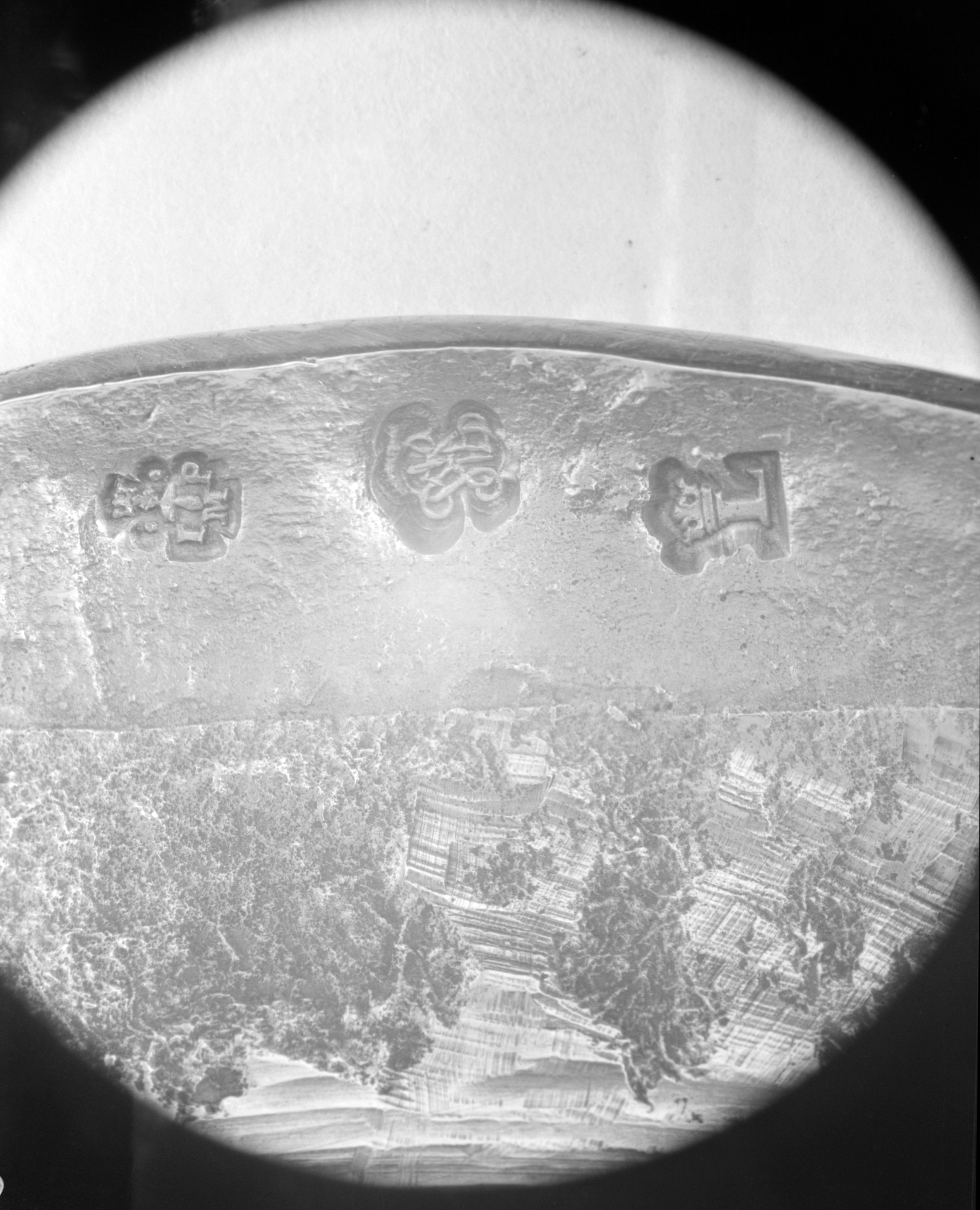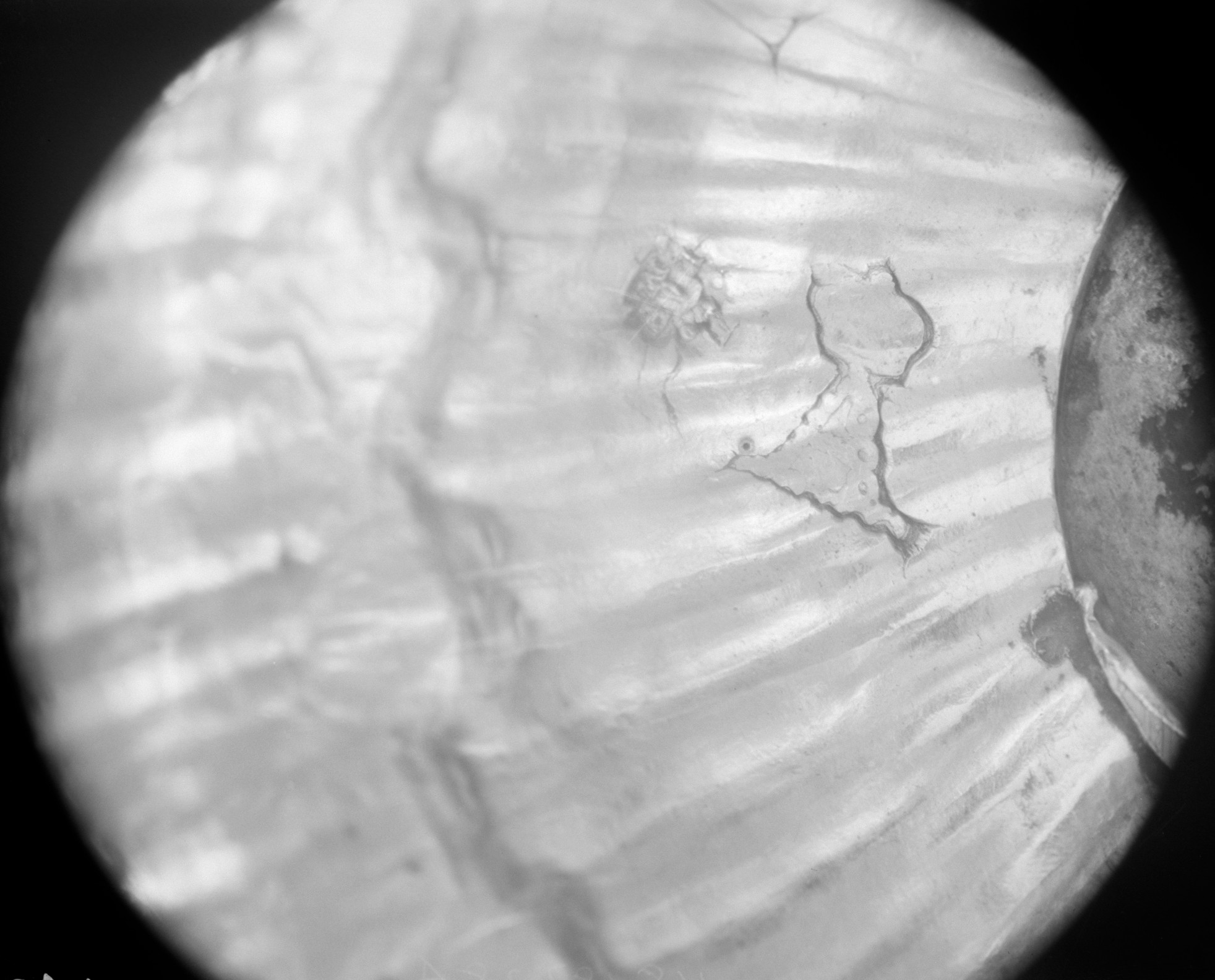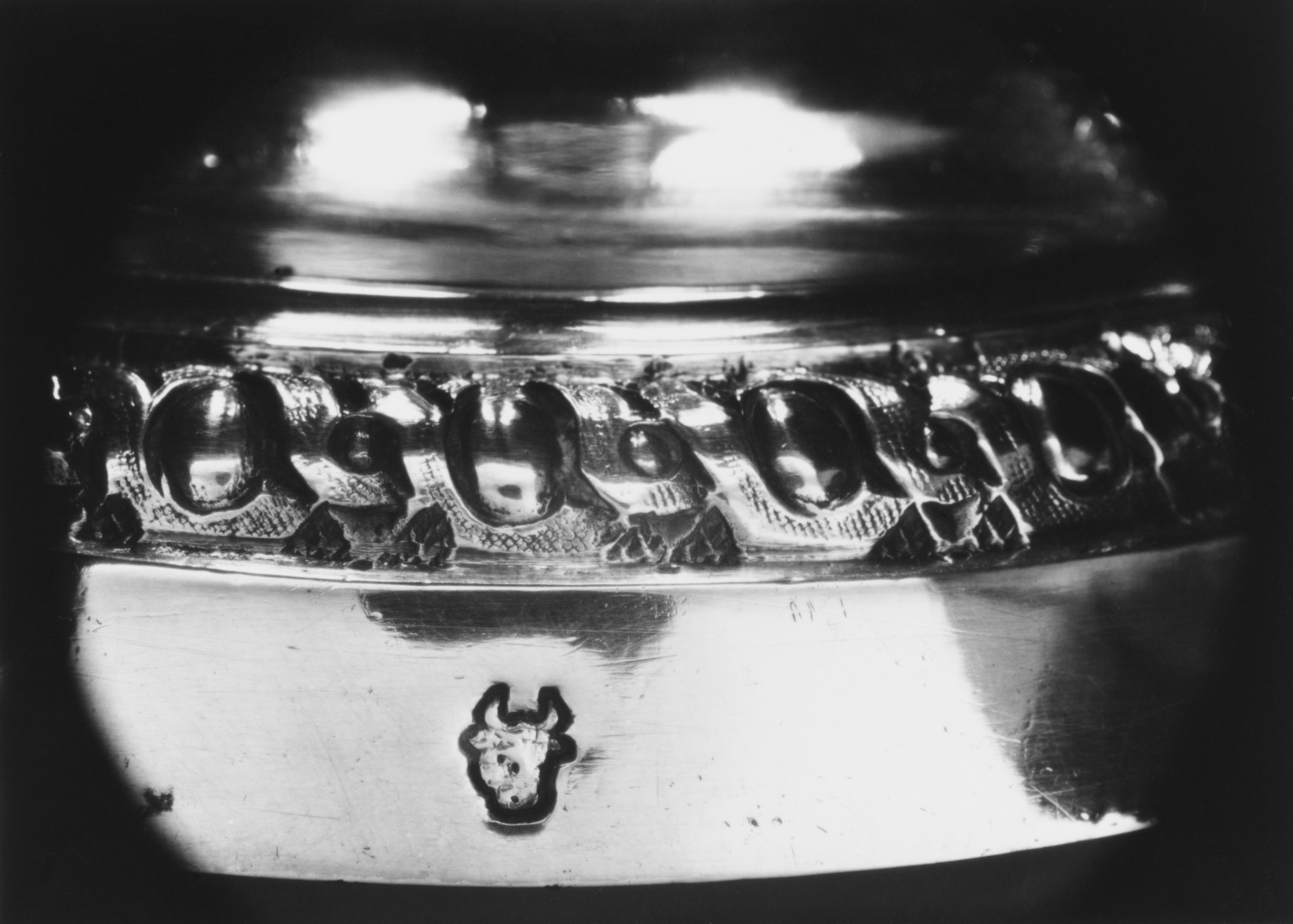Pair of candlesticks
In the era before gas lighting and electricity, candles played a principal role in illuminating the domestic interior. The number of candles lit was an indication of the wealth and status of the owner: beeswax candles burned clean and had a pleasant smell but were quite expensive compared to those made of tallow.
In late seventeenth-century France, a change in dining habits had a significant effect on the production of silver candlesticks. Entertainment was increasingly orientated towards the evening and as a result, elegant lighting became an important part of the interior decoration.
Candlesticks of this model with a baluster stem, spiral fluting, and a shaped-circular foot, were created by different silversmiths pointing to the popularity of the design. Jacques-Pierre Marteau, responsible for this pair of candlesticks, was a prolific silversmith whose work is represented by other silver objects in the Museum’s holdings. The design of these candlesticks strongly resembles another pair in The Met collection made in Paris in 1767–68 by Jean-Baptiste-Francois Chevet (48.187.25a,b, .26a,b), differing only in the decoration of the base.
Daughter of one of the founders of the Weyerhaeuser Timber Company, Catherine D. Wentworth (1865–1948) was an art student and painter who lived in France for thirty years. She became one of the most important American collectors of eighteenth-century French silver and on her death in 1948 bequeathed part of her significant collection of silver, gold boxes, French furniture, and textiles to the Metropolitan Museum. The collection is particularly strong in domestic silver, as illustrated by this pair of candlesticks.
Due to rights restrictions, this image cannot be enlarged, viewed at full screen, or downloaded.
This artwork is meant to be viewed from right to left. Scroll left to view more.
